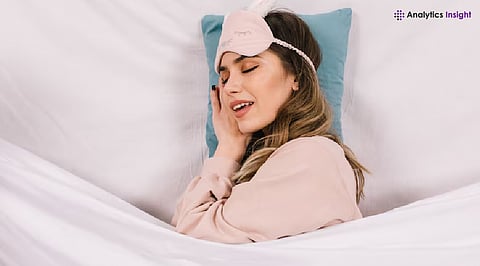

Getting quality sleep is essential for health, and expert-recommended devices like Dodow, Philips HF3520, and Muse S can support better sleep habits. Environmental modifications, such as blackout curtains and white noise machines, alongside relaxation techniques, contribute to a consistent, restful sleep routine, improving overall sleep quality and well-being
Getting enough good-quality sleep is essential for overall health. According to the Centers for Disease Control and Prevention (CDC), adults should aim for at least 7 hours of sleep per night. To help meet this goal, experts have recommended several devices that support better sleep habits and nighttime routines.
The Dodow is a sleep aid that emits a pulsing blue light projected onto the ceiling to lead users through breathing exercises. The light opens and closes, encouraging users to breathe slowly in and out. Slowing down breathing has been known to stimulate the parasympathetic nervous system, which will relax the body. Although this device does not induce sleep itself, it enhances practices that have been proven to decrease stress at bedtime.
The Philips HF3520 Wake-Up Light is programmed to increase light intensity gradually in the morning to mimic a natural sunrise. This type of light exposure can help regulate circadian rhythms, the Sleep Foundation says.
The Hatch Restore is a smart light, sound machine, and alarm. Users can program their bedtime and wake-up times through the companion app. These functions are designed to provide a consistent sleep environment.
Products such as the Muse S (Gen 2) are wearable headbands that track brain waves (EEG), heart rate, body activity, and breathing. They aim to facilitate relaxation and monitor stages of sleep. Muse comes equipped with guided meditation and biofeedback capabilities, which have been established in clinical studies to assist some users in diminishing stress. However, outcomes differ from person to person.
Sleep specialists at the American Academy of Sleep Medicine suggest these environmental modifications to enhance sleep:
Utilize blackout curtains or sleep masks to eliminate light.
Maintain room temperature cool, preferably between 16–19°C
Use white noise machines or earplugs to reduce background noise
Select a supportive mattress and pillow to keep the spine in alignment and alleviate discomfort.
These shifts are further endorsed by research demonstrating that sleep quality can substantially be influenced by light, sound, and environmental temperature.
Practices like deep breathing, progressive muscle relaxation, and mindfulness meditation have been shown to reduce sleep latency (the time it takes to fall asleep). Devices such as the iHome Zenergy Candle include light and sound programs that guide users through breathing exercises. These tools can support relaxation routines but are not medical treatments.
Improving sleep quality involves more than just one tool or device. It includes maintaining a consistent sleep schedule, creating a restful environment, and practicing relaxation techniques. When used correctly, expert-recommended gadgets can support these habits and contribute to better sleep over time.
